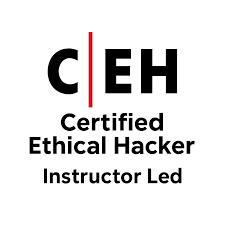Palo Alto Training – Learn Palo Alto Firewalls in 2025

Passing the Certified Ethical Hacker (CEH) exam was a transformative milestone in my cybersecurity career. It wasn’t easy, and it definitely wasn’t quick—but it was worth every hour I invested. In this article, I want to share my personal journey of preparing for and passing the CEH exam in hopes that it helps others avoid […]

Passing the Certified Ethical Hacker (CEH) exam was a transformative milestone in my cybersecurity career. It wasn’t easy, and it definitely wasn’t quick—but it was worth every hour I invested. In this article, I want to share my personal journey of preparing for and passing the CEH exam in hopes that it helps others avoid some common pitfalls and succeed in their own paths.
Like many aspiring cybersecurity professionals, I was overwhelmed by the number of certifications out there—CompTIA Security+, CISSP, OSCP, and more. But what drew me to CEH was its balance between ethical hacking theory and hands-on technical application.
I wanted a credential that:
CEH fit the bill perfectly, especially with the release of version 13, which included updated content, cloud security, and MITRE ATT&CK integration.
Before diving into CEH-specific material, I made sure I had a solid grasp of basic networking, operating systems (Linux and Windows), and cybersecurity principles.
Once I felt confident in the basics, I purchased the CEH v13 training bundle from EC-Council, which included the official courseware, iLabs, and practice exams.
I gave myself 3 months to prepare for the CEH exam, studying 2–3 hours on weekdays and 4–6 hours on weekends. I created a simple study schedule broken down into four phases:
Here’s a quick breakdown of the tools and platforms that made a real difference in my CEH prep:
I chose to take the CEH exam online using EC-Council’s proctored platform. The exam consisted of 125 multiple-choice questions to be completed in 4 hours. Here’s how it went:
After about 10 tense minutes of waiting, I received my provisional result: PASS. I was thrilled—and relieved. My official certificate arrived via email within a week.
Theoretical knowledge won’t get you far without practical experience. The labs helped me connect concepts with real tools and scenarios.
Questions about authorization, contracts, responsible disclosure, and compliance can make or break your score.
You should be able to think like an attacker—from reconnaissance to exploitation and covering tracks.
Taking at least two full-length practice exams under timed conditions helped me stay calm and manage time on the real test.
Give yourself time to absorb the material. Avoid cramming and create a study plan that suits your lifestyle.
Passing CEH opened up several new opportunities for me, including a penetration testing internship and a freelance role conducting vulnerability assessments. I’m now preparing for CEH Practical to showcase my hands-on skills and considering CHFI (Computer Hacking Forensic Investigator) as my next step.
The CEH exam was a challenging but rewarding experience. It taught me how to think critically, sharpened my technical skills, and validated my place in the cybersecurity community. If you’re preparing for CEH, I hope my story gives you confidence and direction.
Stay consistent, stay curious—and don’t just aim to pass. Aim to learn.
For official CEH training materials, exam registration, and updates, visit:
https://securevalley-training.net/certified-ethical-hacker-ceh-fr/https://securevalley-training.net/certified-ethical-hacker-ceh-fr/
Get certified with industry-leading cybersecurity certifications from EC-Council, PECB, Palo Alto Networks, and more.

Learn from world-class instructors Collaborate with top professionals Advanced training...

The CEH is the world's leading cybersecurity certification, recognized by...

Onsite training course Led by an instructor Interactive sessions

Asynchronous, self-study environment Video-streaming format Flexible learning schedule
Adding {{itemName}} to cart
Added {{itemName}} to cart

